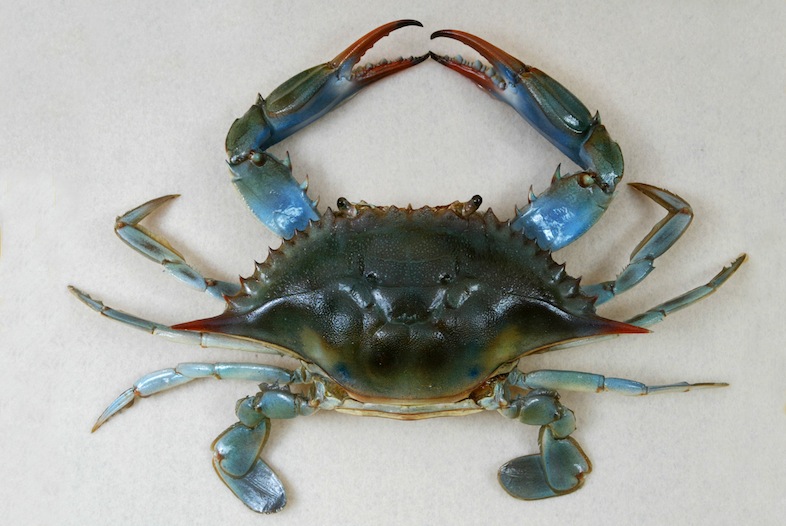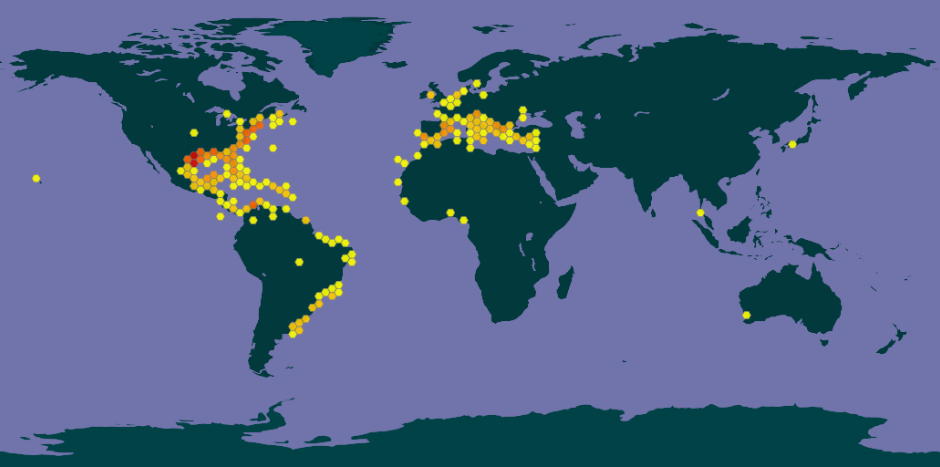Callinectes sapidus Rathbun, 1896
Blue crab

| Kingdom | Animalia |
| Phylum | Arthropoda |
| Class | Malacostraca |
| Order | Decapoda |
| Family | Portunidae |
| Genus | Callinectes |
| Species | Callinectes sapidus Rathbun, 1896 |
Listen to the SONIFIED SPECIES

Known records of this species

Taxon Description
Callinectes sapidus (from the Ancient Greek κάλλος,”beautiful” + nectes, “swimmer”, and Latin sapidus, “savory”), the blue crab, Atlantic blue crab, or, regionally, the Maryland blue crab, is a species of crab native to the waters of the western Atlantic Ocean and the Gulf of Mexico, and introduced internationally. C. sapidus is of considerable culinary and economic importance in the United States, particularly in Louisiana, the Carolinas, the Chesapeake Bay, Delaware, and New Jersey. It is the Maryland state crustacean and the state’s largest commercial fishery. Due to overfishing and environmental pressures some of the fisheries have seen declining yields, especially in the Chesapeake Bay fishery. Unlike other fisheries affected by climate change, blue crab is expected to do well; warming causes better breeding conditions, more survivable winters, and a greater range of habitable areas on the Atlantic coast. Whether this will have negative effects on the surrounding ecosystems from an increased crab population is still unclear.
Description
C. sapidus is a decapod crab of the swimming crab family Portunidae. The genus Callinectes is distinguished from other portunid crabs by the lack of an internal cartilaginous spine on the carpus (the middle segment of the claw), as well as by the T-shape of the male abdomen. Blue crabs may grow to a carapace width of 23 cm (9 in). C. sapidus individuals exhibit sexual dimorphism. Males and females are easily distinguished by the shape of the abdomen (known as the “apron”) and by color differences in the chelipeds, or claws. The abdomen is long and slender in males, but wide and rounded in mature females. A popular mnemonic is that the male’s apron is shaped like the Washington Monument, while the mature female’s resembles the dome of the United States Capitol. Claw color differences are more subtle than apron shape. The immovable, fixed finger of the claws in males is blue with red tips, while females have orange coloration with purple tips. A female’s abdomen changes as it matures: an immature female has a triangular-shaped abdomen, whereas a mature female’s is rounded.